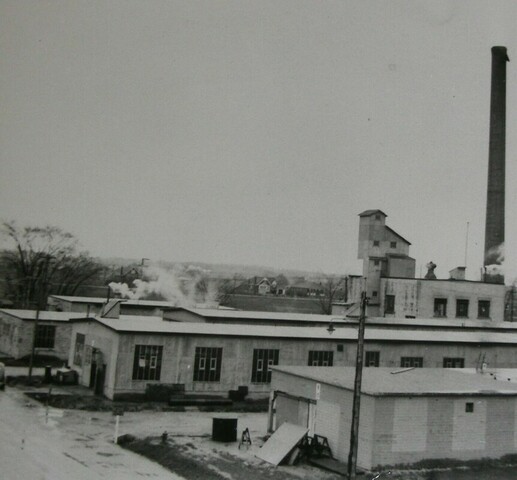
WWII GECO Women Scarborough
The War Effort
General Engineering Company of Ontario, munitions factory, Scarborough, c. 1943. Image: Archives of Ontario
Working in the GECO munitions factory, Scarborough, 1940. Courtesy of the Hamilton Family.
Performing an ammunition quality inspection, GECO munitions factory, Scarborough, c. 1943. Courtesy of the Hamilton Family.
Working in the GECO munitions factory, Scarborough, ON, c. 1943. Courtesy of the Hamilton Family.
The war effort
When Great Britain declared war on Germany in 1939, Canada immediately joined the war. Men and women volunteered to serve overseas, but the homefront was also important for resource production. One of the most pressing needs was munitions, and by 1940, the Allied War Supply Corporation had selected the General Engineering Company of Ontario (GECO) for the top secret Project 24, known simply as Scarboro.
King George VI disappropriated land around Eglinton Ave. East from seven different owners, including the Hough family of Hough’s Corners and the Devenishes to the west. Scarborough was determined to be an ideal location – remote enough for a munitions factory, so that any major explosions would not injure anyone outside the plant. It was also close enough to the city’s infrastructure and transit services. Construction began January 1941, and within six months workers had built 170 buildings and 2.5 miles of tunnels throughout 346 acres of farmland.
Bomb Girls
GECO was a shell filling factory – empty shells were sent to GECO, and its workers would have the dangerous task of turning them into explosives, and shipping them overseas. The workforce comprised mainly young women with no factory experience, and at times, no work experience at all. Dubbed “Munitionettes,” “Fusiliers,” or “Bomb Girls”, they had a half day’s training and took a secrecy oath before being put to work.
An estimated 21,000 people worked at the factory during its four years of operation, creating a unique community. The company had its own newspaper, called the GECO Fusilier, and for $1 a year workers could join the GECOcites Recreation Club which hosted softball games and built a mini-putt green and a lawn bowling area. There were sold out monthly dances, Victory bond drives and gardens, talent shows, and bingo was so popular that they had to stagger seatings. Workers took breaks in a massive 2000 seat cafeteria where the kitchen served 3000 meals a day, and an annual Christmas dinner of 400 turkeys. With the help of a Canadian Government incentive, the factory even provided childcare for working mothers.
Working at the factory
Eglinton Avenue did not yet cross the Don Valley, and was not the major corridor between east and west that it is today. Most of the workforce came from the downtown core, so GECO set up its own bus line with seven downtown stops. In a typical twelve month period, the 26 buses per shift carried an equivalent of ¼ of Canada’s population, 24 times around the world.
The plant ran 24 hours a day, six days a week, and for four years, had not a single fatal accident. Once they arrived, workers had to go through change houses to get from the “dirty” side of the plant to the clean side of the plant where the munitions were filled. The clean side had no windows, and each building was interconnected. Uniforms were washed every shift, and the work rooms cleaned daily in hopes of keeping out dust, static, or anything that could cause a spark. Workers had to wash, take off their clothes down to their undergarments, and remove anything metal (including bobby pins, or bra clasps). They changed into uniforms and were inspected by the matron in charge before being allowed to enter to the clean side. A process they would have to repeat for their lunch break.
Remembering GECO
For nine years after the closure of the munitions factory, some of the buildings were used for emergency housing for an estimated 6000 people in need and returning soldiers. Today, 17 of the original buildings still stand, and parts of the elaborate tunnel system survive.
Historian Barbara Dickinson has researched the GECO factory and its workers in great detail in her book, “Bomb Girls” (2015). Her extensive research has even informed a CBC television series, and in 2017, a documentary was released with first-hand accounts from women who worked in the former factory. The same year, a mural was unveiled to honour the Bomb Girls as part of the Underpass Project at Warden and St. Clair Avenue.

